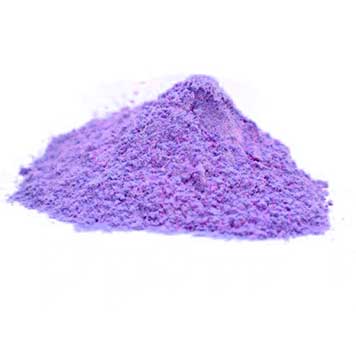
e101 food additive
The Role of E101 Food Additive A Comprehensive Overview
Food additives play an essential role in the modern food industry, enhancing flavors, preserving freshness, and improving the overall quality of products. Among these additives, E101, commonly known as riboflavin or vitamin B2, stands out due to its beneficial properties. This article delves into the characteristics, functions, sources, and safety of E101, providing a holistic view of its importance in our diet.
What is E101?
E101 is a water-soluble vitamin that is critical for human health. It belongs to the B vitamin family and is vital for energy metabolism, helping to convert carbohydrates, fats, and proteins into energy. Riboflavin is known for its yellow color, which is why it is often used as a colorant in food products. Its chemical structure is essential for various biochemical reactions, underscoring its importance in both nutritional and physiological functions.
Functions of E101 in Food
E101 serves multiple functions in food products
1. Coloring Agent Due to its vibrant yellow hue, E101 is often used to enhance the visual appeal of foods. It is commonly found in products like dairy, processed cheese, and certain beverages. The appealing color not only makes these products more attractive but also signals quality to consumers.
2. Nutritional Enhancement Riboflavin is a crucial nutrient, and its addition to food products helps to fortify them. Fortification is particularly vital in addressing nutritional deficiencies in populations that may lack sufficient dietary sources of this vitamin.
3. Antioxidant Properties E101 exhibits antioxidant properties, which can help in preventing oxidation in food products, thereby extending their shelf life. This can lead to reduced food waste and enhanced food safety, making it a valuable additive in the food industry.
e101 food additive

4. Preventing Deficiencies Including riboflavin in various food items can assist in preventing deficiencies in the general population. Riboflavin deficiency can lead to serious health issues, including skin disorders and energy metabolism problems.
Sources of E101
Riboflavin naturally occurs in a variety of foods. Dairy products, eggs, lean meats, nuts, and green leafy vegetables are some of the primary dietary sources. Additionally, whole grains and fortified cereals also provide adequate amounts of this essential vitamin. The incorporation of E101 as a food additive is particularly beneficial for individuals whose diets may not include sufficient amounts of these natural sources.
Safety and Regulations
The safety of E101 has been extensively studied, and it is generally recognized as safe (GRAS) by food safety authorities around the world, including the European Food Safety Authority (EFSA) and the U.S. Food and Drug Administration (FDA). Side effects associated with riboflavin consumption are rare, as it is water-soluble, meaning any excess amounts are easily excreted by the body.
Specific regulations govern the allowable levels of E101 in food products to ensure consumer safety. These regulations are designed to balance the benefits of fortifying foods with riboflavin while preventing excessive intake. As long as these guidelines are followed, riboflavin serves as a beneficial additive in the food supply.
Conclusion
E101, or riboflavin, plays a multifaceted role in the food industry, enhancing both the nutritional quality and visual appeal of various products. Its natural presence in a wide array of foods, combined with its safety profile, makes it an essential additive in combating nutritional deficiencies while improving food quality. As consumers become more aware of the products they consume, the continued use and acceptance of E101 may grow, promoting better health outcomes and a more nutritious diet. Ultimately, E101 exemplifies how food additives can contribute positively to human health while enhancing our enjoyment of food.
-
Pure Sodium Dichloroisocyanurate Dihydrate | Powerful DisinfectantNewsAug.29,2025
-
Industrial Chemicals: Quality & Purity for Every IndustryNewsAug.28,2025
-
Nitrile Rubber Honoring Strict Production StandardsNewsAug.22,2025
-
Aspartame Ingredients Honoring Food Safety ValuesNewsAug.22,2025
-
Fertilizer for Balanced Plant NutritionNewsAug.22,2025
-
Cyanide Gold Processing with High Purity AdditivesNewsAug.22,2025
-
Formic Acid in Textile Dyeing ApplicationsNewsAug.22,2025
Hebei Tenger Chemical Technology Co., Ltd. focuses on the chemical industry and is committed to the export service of chemical raw materials.
-

view more DiethanolisopropanolamineIn the ever-growing field of chemical solutions, diethanolisopropanolamine (DEIPA) stands out as a versatile and important compound. Due to its unique chemical structure and properties, DEIPA is of interest to various industries including construction, personal care, and agriculture. -

view more TriisopropanolamineTriisopropanolamine (TIPA) alkanol amine substance, is a kind of alcohol amine compound with amino and alcohol hydroxyl, and because of its molecules contains both amino and hydroxyl. -

view more Tetramethyl Thiuram DisulfideTetramethyl thiuram disulfide, also known as TMTD, is a white to light-yellow powder with a distinct sulfur-like odor. It is soluble in organic solvents such as benzene, acetone, and ethyl acetate, making it highly versatile for use in different formulations. TMTD is known for its excellent vulcanization acceleration properties, which makes it a key ingredient in the production of rubber products. Additionally, it acts as an effective fungicide and bactericide, making it valuable in agricultural applications. Its high purity and stability ensure consistent performance, making it a preferred choice for manufacturers across various industries.





